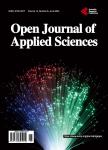Structured Imagery Processing Strategies for Spectroscopic Measurement in Dense Solutions
Structured Imagery Processing Strategies for Spectroscopic Measurement in Dense Solutions作者机构:Laboratoire d’Instrumentation Image et Spectroscopie(L2IS) Institut National Polytechnique Felix Houphouë t-Boigny Departementde Formation et de Recherche du Genie Electrique et Electronique Yamoussoukro Cô te d’Ivoire Laboratoire de physique Fondamantale Appliquée(LPFA) Université NanguiAbrogoua Unité de Formation et de Recherche des Sciences Fondamentales Appliquées Abidjan Cô te d’Ivoire
出 版 物:《Open Journal of Applied Sciences》 (应用科学(英文))
年 卷 期:2017年第7卷第6期
页 面:262-281页
学科分类:1002[医学-临床医学] 100214[医学-肿瘤学] 10[医学]
主 题:Spectrophotometry Dense Media Extinction Coefficient Structured Illumination Principal Component Analysis
摘 要:Absorbance measurement in dense media via conventional optical spectroscopy techniques leads to inaccurate results. This is mainly due to multiple scattering phenomena that contribute to the overall light extinction in the interrogated sample. This limitation imposes the use of dilute solutions for absorption spectroscopy. However, depending on the polarity of the solvent used, the absorption spectrum may vary over a given solution. Structured illumination technique offers an alternative to this problem, and provides the ability to calculate in-situ optical properties in dense media. In this paper, we propose two processing methods applied to images acquired by structured laser illumination planar imaging (SLIPI) technique to extract extinction coefficients μ_e of probed solutions: The first is based on the implementation of principal component analysis (PCA) and the second, on the calculation of Mean Value. In practice, two kinds of studies were carried out: one quantitative set of measurements within chlorophyll liquid solutions and a second set with concentrated coffee solutions, with controlled proportion and concentrations for each sample. These two proposed analytical techniques are advantageous because they are very easy to implement and provide a much simpler alternative to the previous one. Both methods offer satisfactory results, similar to those obtained with the original method which is based on 1D Fourier transform.



